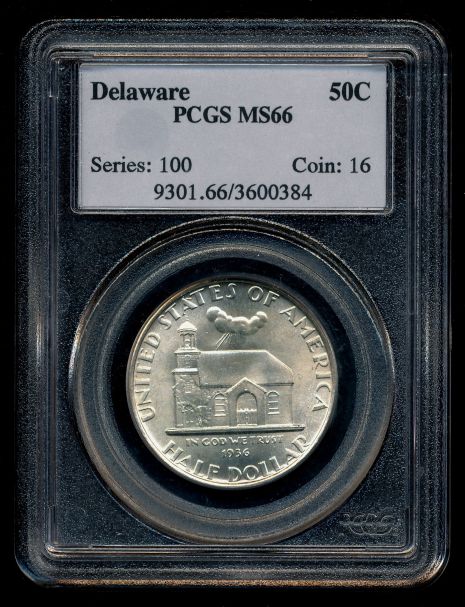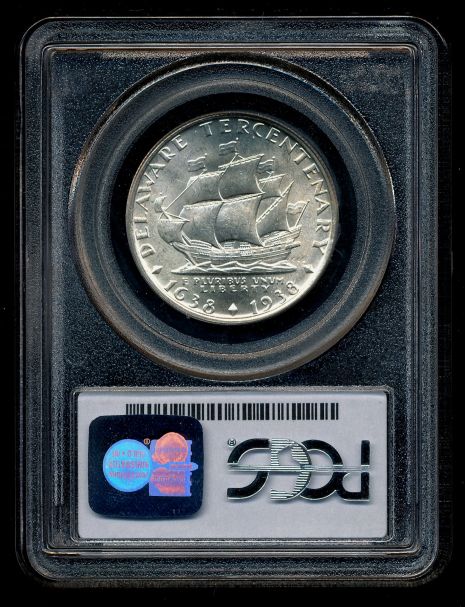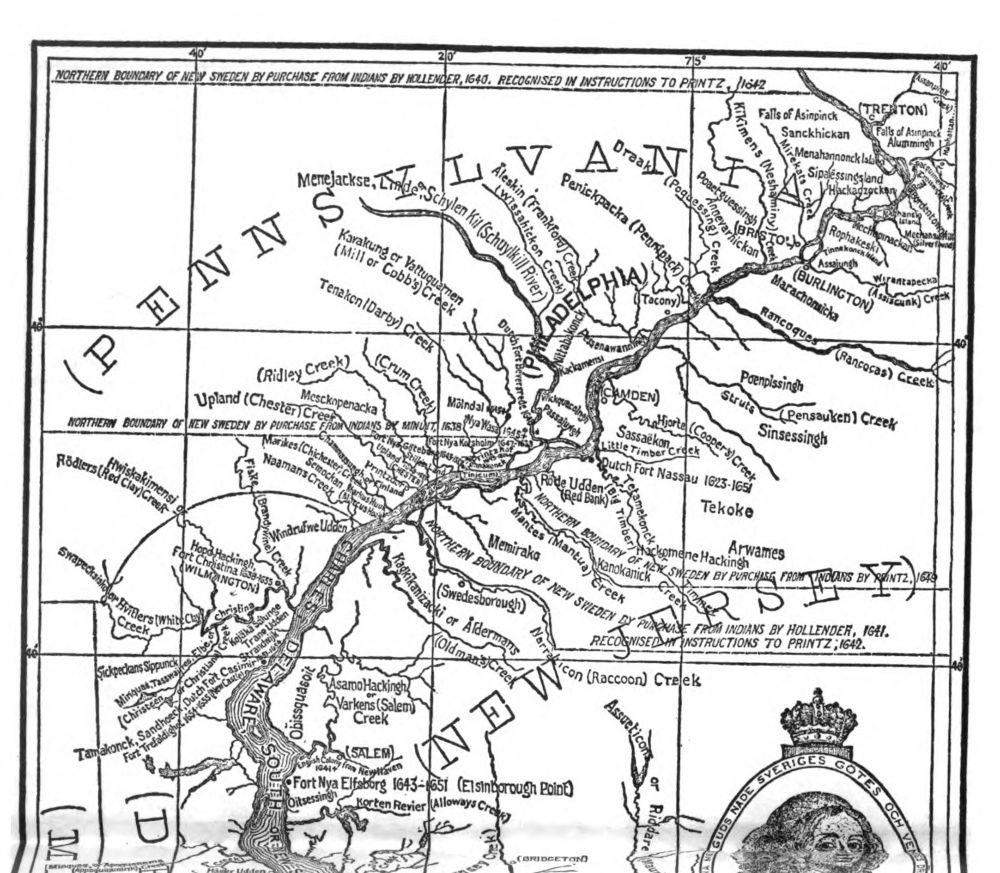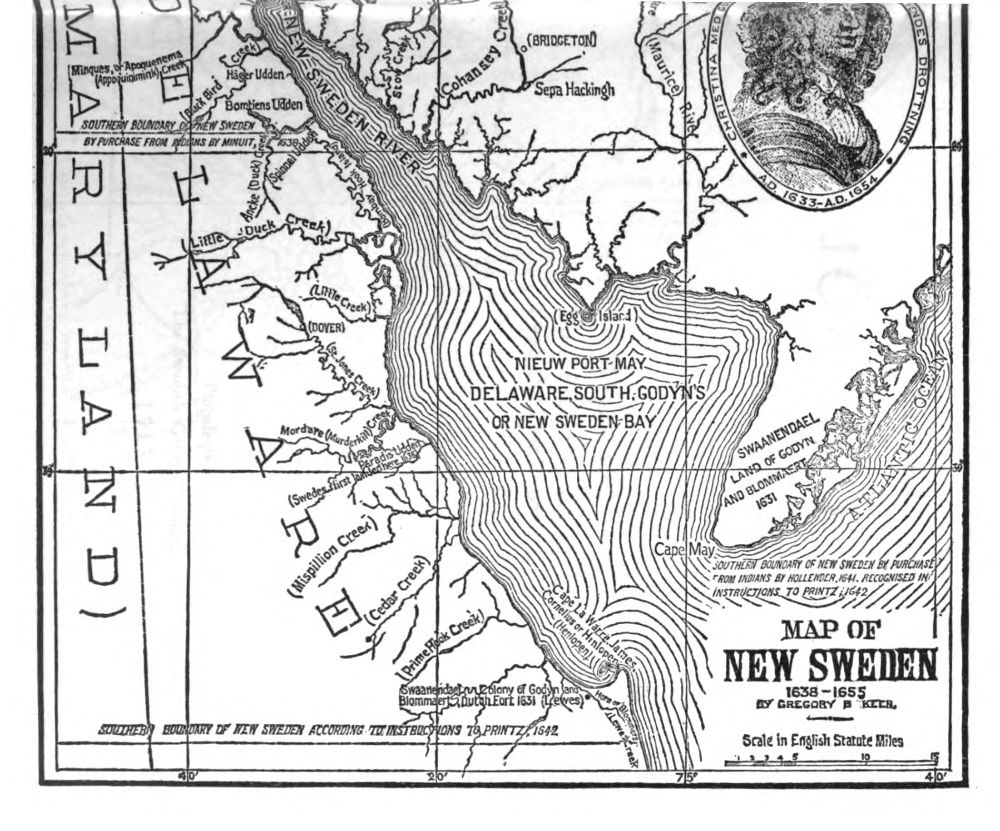The focus of the 1936 Landing of the Swedes in Delaware Half Dollar is clear - commemoration of the March 1938 landing of Swedes (and Finns) at "The Rocks" on the banks of the Christina River at present-day Wilmington, Delaware, the subsequent building of Fort Christina and the start of what would become the colony of New Sweden.
1936 Landing of the Swedes in Delaware Tercentenary Half Dollar

That said, it's important to understand that official tercentenary celebrations extended beyond Delaware to include, among others, those in Pennsylvania and New Jersey.
The US Congress created the United States Delaware Valley Tercentenary Commission on June 5, 1936 via Public Resolution 102; the Resolution was signed by US President Franklin Delano Roosevelt. The 15-member Commission was "on behalf of the United States [to] cooperate with representatives of the States of Delaware and Pennsylvania in the appropriate observance of such anniversary." It was also to "extend appropriate courtesies to such representatives of the Government of Sweden, and other persons, as may respond to the invitation of the President extended as hereinbefore provided."
Note: The Resolution was later amended to include Finland.The Pennsylvania legislature established the Pennsylvania Three-Hundredth Anniversary Commission, and the New Jersey Assembly created the New Jersey Commission to Commemorate the Three Hundredth Anniversary of the Settlement of the Swedes and Finns on the Delaware. (I wonder if the New Jersey folks thought they would benefit more if their Commission had a longer name!

)
The Delaware Tercentenary Commission and its Wilmington, Delaware celebration, including attendance by Swedish and Finnish VIPs and the unveiling of Sweden's gift to the US of a commemorative statue by Carl Milles, was certainly the centerpiece of Tercentenary events, but Pennsylvania and New Jersey sponsored events of their own. After the ceremonies in Wilmington on June 27, 1938, attentions turned to events in Philadelphia (June 28) and Chester, Pennsylvania (June 29), as well as in Swedesboro and Salem, New Jersey (June 30).
But what exactly was the scope of New Sweden?
In 1637, the New Sweden Company was formed for the purpose of enabling Sweden to become active in - and profit from - the trade of New World tobacco and furs.
Peter Minuit - famed purchaser of Manhattan Island for the Dutch - convinced the Swedish Government that the territory bordering the Delaware River between Miniquas Kill (the present-day Christina River) and Sankikan Kill (present-day Trenton, NJ) was not claimed by England, France, the Netherlands or Spain, and that it would be ideal for a New Sweden colony.
Minuit led an expedition that departed Gothenburg, Sweden in December 1937; the voyage was comprised of two ships, the
Kalmar Nyckel and
Fogel Grip. The two ships arrived in present-day Wilmington, Delaware in March 1638 and the soldiers/settlers built a fort/created a settlement that was named Fort Christina in honor of the Swedish Queen. These activities were the focal point of the commemorative half dollar.
Beginning in 1640, subsequent expeditions by Sweden to the New World expanded its colony's territory north along the Delaware River. It was during this time that conflicts with the Dutch began as the Swedish expansion encroached upon prior Dutch claims.
After briefly partnering to expel British colonists from the area in 1641-42, relations between the Swedes and Dutch deteriorated as a result of conflicting territorial claims. New Sweden prospered during the 1640s, with Johan Printz as its governor.
With Peter Stuyvesant's arrival in 1647 to lead the Dutch colonial efforts in the region, fortunes began to turn for New Sweden and by November 1655, the Dutch had captured all of Sweden's forts in the area - New Sweden was no more. It can be argued, however, that New Sweden was doomed beginning in the late 1640s when Sweden largely abandoned its interests in the colony.
If you'd like to dig into the history of New Sweden, I suggest having a look at:
-
New Sweden: A Brief HistorySo, while Delaware - the site of Sweden's first New World settlement - is front and center for the 1936 Landing of the Swedes in Delaware Half Dollar, I think it's important to recall that Sweden's colonial efforts expanded beyond its small outpost on the banks of the Christina River.
New Sweden Map - Circa 1642
 (Image Credit: The descendants of Joran Kyn of New Sweden, Gregory B. Keen. 1913. Public Domain.)
(Image Credit: The descendants of Joran Kyn of New Sweden, Gregory B. Keen. 1913. Public Domain.)For more of my stories about commemorative coins and medals, including other Delaware half dollar and Sweden and Finland anniversary participation stories, see:
Commems Collection.

























